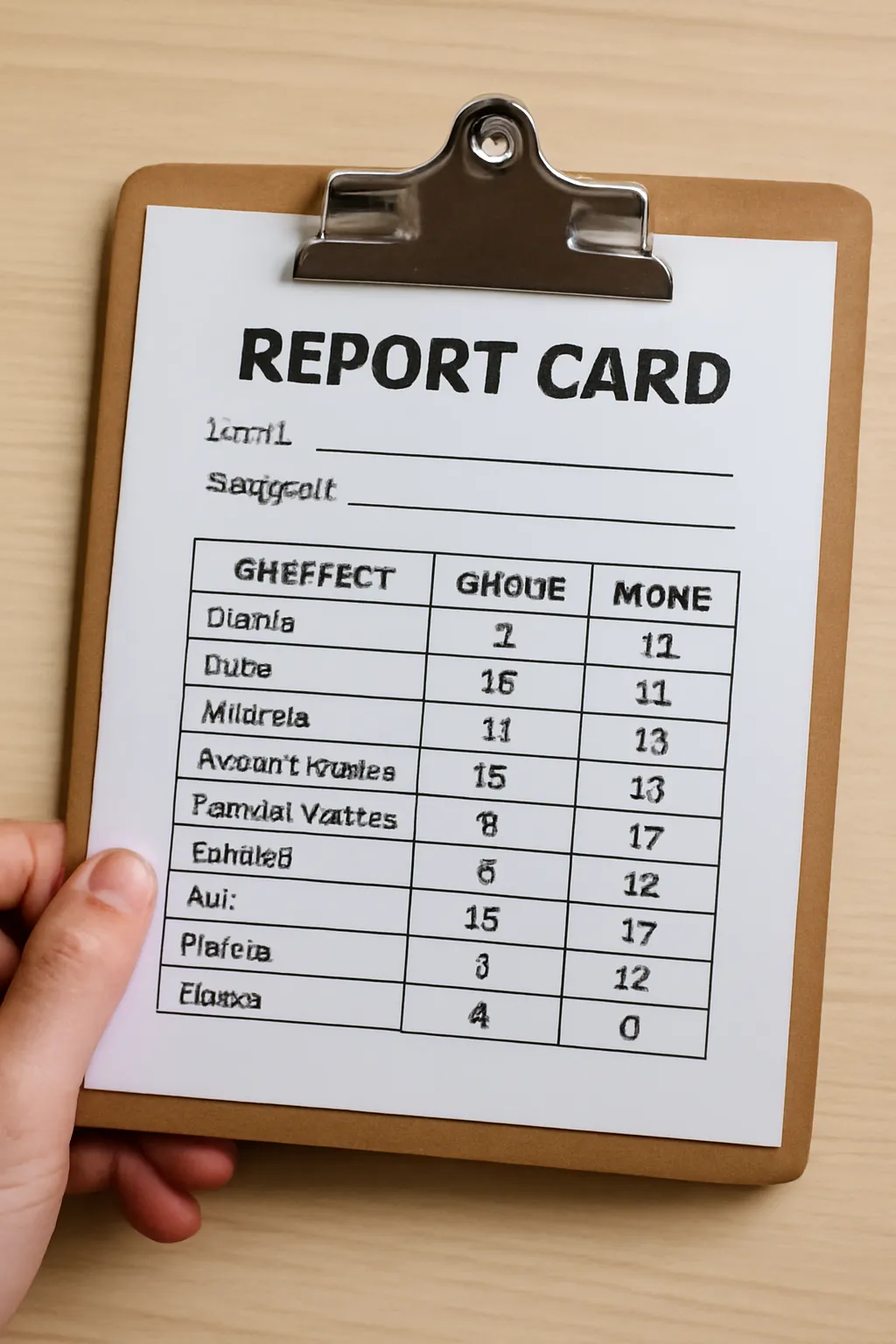Middle school years are often some of the most formative in a student’s academic journey. One of the most significant aspects of this phase is the report card, which serves not only as a formal record of academic performance but also as a source of motivation, challenge, and even reflection. The ranking on a report card, often seen as a direct indicator of a student’s performance, plays a key role in shaping their future approach to academics. But what exactly does the middle school report card ranking mean, and how can students, teachers, and parents best interpret these rankings to foster growth?
Understanding the Middle School Report Card Ranking
A middle school student’s report card typically includes grades across various subjects, and a ranking that places the student in a certain percentile or order among their peers. This ranking reflects their relative academic standing within the class or year group and is often a source of stress or pride. However, it’s important to view this ranking not only as a number but as part of a broader context.
While the grades provide a snapshot of a student’s mastery of the subjects, rankings are affected by a variety of factors, including the class’s overall performance. In a high-performing class, even a good grade might result in a lower ranking, whereas, in a class with varied performance levels, the same grade might place a student higher. Therefore, the ranking provides insight into how a student is performing compared to their peers.
Factors That Affect Report Card Rankings
Several elements influence how rankings are determined in middle school. Here are a few key considerations:
-
Grade Distribution The number of students who score highly in the class will directly affect the rankings. A class where most students perform well will push down the ranking of even the best-performing students.
-
Class Size In a larger class, it is generally more challenging to secure a top ranking, while in smaller classes, there may be more opportunities for students to rise to the top.
-
Consistency of Performance Some students may perform well in certain subjects but struggle in others. A report card ranking often reflects a student’s consistency in all subjects, not just the areas they excel in.
-
Effort and Improvement In some cases, rankings take into account the student’s improvement over the grading period. A student who shows substantial growth may be ranked higher, even if their raw grades aren’t the highest in the class.
It’s essential to understand that a ranking does not define a student’s potential for success in future academic or life endeavors. Instead, it should be viewed as a tool for assessing where a student stands and identifying areas for improvement.
How Report Card Rankings Influence Students and Parents
While rankings can serve as a helpful feedback mechanism, their impact can vary widely between students and parents. Some students thrive under the pressure of rankings, viewing them as a challenge to push themselves harder. Others might feel discouraged if their ranking falls lower than they expected.
For parents, the report card ranking can also provide important information. It serves as a way for parents to gauge their child’s academic standing and to identify whether additional support is needed, whether through tutoring, time management strategies, or addressing any emotional or motivational concerns.
Maximizing Student Growth Through Report Card Feedback
While rankings are often the focus, it is the specific feedback and grades within the report card that provide the most actionable insights for student growth. Understanding these areas in detail allows students and parents to work together to improve not just grades, but the overall approach to learning.
1. Setting Realistic Academic Goals
Rather than focusing on the ranking alone, students should set individual academic goals for themselves. If a student knows they are struggling in certain subjects, their focus should be on improving in those areas, regardless of how their ranking compares to their classmates. A personalized approach to goal-setting often results in more meaningful improvements than simply striving to be number one in the class.
2. Emphasizing Consistency Over Perfection
It’s crucial to understand that no student is perfect, and academic performance will naturally fluctuate. By focusing on consistent study habits and gradually improving in areas of weakness, a student is likely to achieve more sustainable success in the long run.
3. Using Rankings as a Benchmark for Self-Reflection
Students can use their report card ranking as a tool for self-reflection. If the ranking is lower than expected, it could be a sign to evaluate factors such as study habits, time management, or engagement in class. If the ranking is high, it can serve as a confidence boost and motivation to maintain the effort.
What Should Teachers and Parents Do to Support Students?
For teachers and parents, the report card should not be seen as the final judgment of a student’s ability or potential. Rather, it should be an ongoing dialogue about how to support the student’s growth. Teachers and parents play an essential role in creating an environment that values progress over perfection.
1. Collaborative Goal Setting
Parents and teachers should work with students to create achievable, specific academic goals. These goals should be focused on areas of improvement and emphasize progress, not just outcomes.
2. Encouraging Healthy Competition
While rankings can lead to unhealthy competition if not managed properly, healthy competition encourages students to strive for excellence while still supporting their classmates. Teachers can create opportunities for students to collaborate and learn from one another, reducing the pressure to rank higher than others.
3. Fostering a Growth Mindset
A growth mindset is key to long-term academic success. Students should be encouraged to see setbacks as opportunities to learn and grow. The ability to learn from mistakes is far more valuable than simply achieving high grades.
By understanding the dynamics of middle school report card rankings, students can better navigate their academic journeys. Rankings, when viewed in context, are just one part of the story. The real takeaway from a report card is the growth that can come from it. As students, teachers, and parents work together to interpret rankings and use them as a springboard for improvement, they can ensure that these formative years set the stage for future success.






